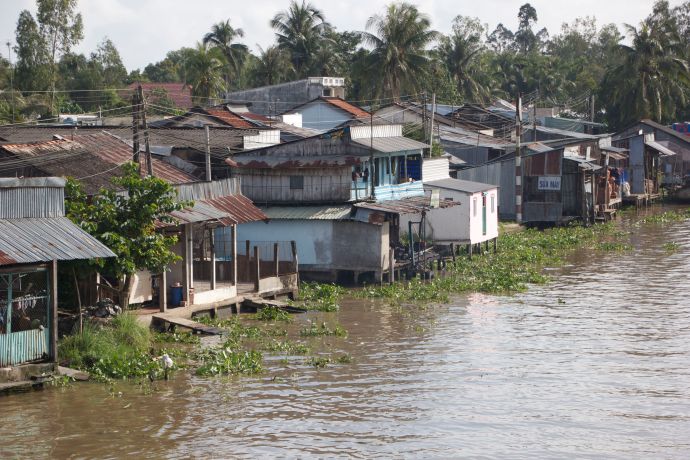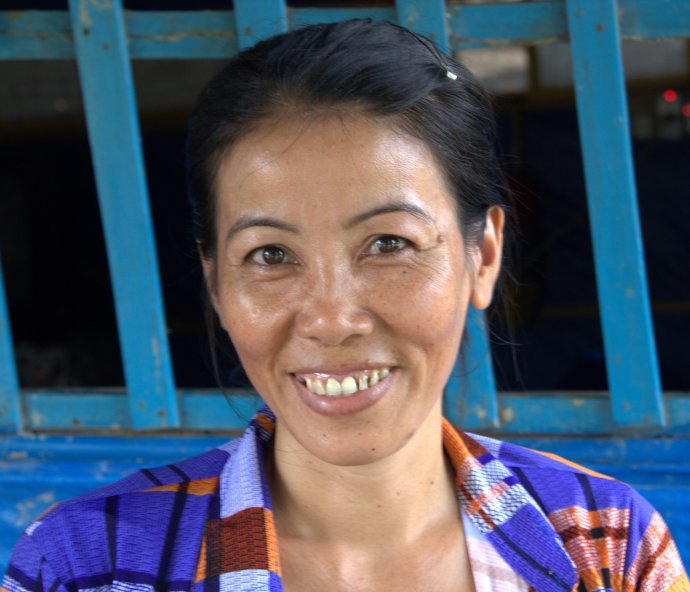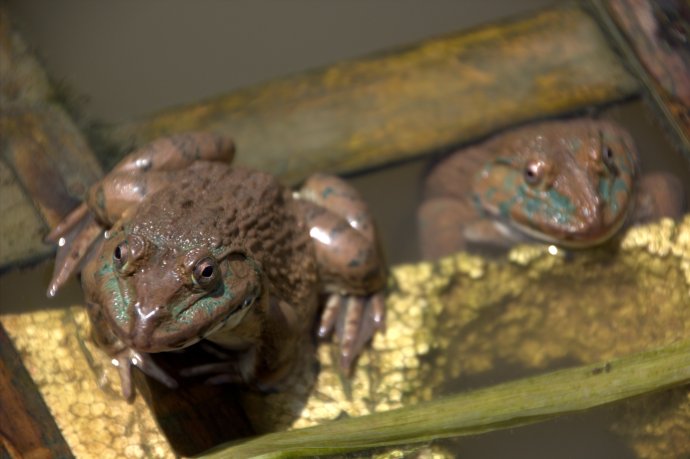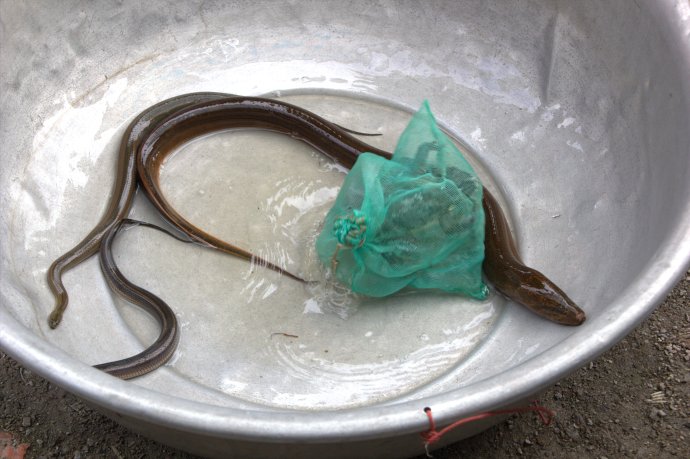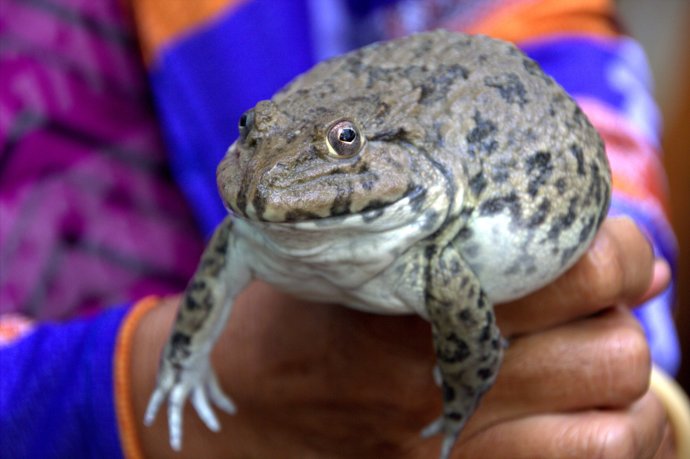 If you (unlike me) are a big lover of frog legs, this is gonna be your favorite post ever. In the event that you (unlike me) are an eel sushi aficianado, you’ll probably think I should be Freshly Pressed. But if you just like stories about people succeeding against all odds, you’re also in luck. Because this is the tale of people with virtually no land, living by the mighty Mekong, and making their way with a lot of clever ingenuity and a little help from their friends at Heifer.
If you (unlike me) are a big lover of frog legs, this is gonna be your favorite post ever. In the event that you (unlike me) are an eel sushi aficianado, you’ll probably think I should be Freshly Pressed. But if you just like stories about people succeeding against all odds, you’re also in luck. Because this is the tale of people with virtually no land, living by the mighty Mekong, and making their way with a lot of clever ingenuity and a little help from their friends at Heifer.
Ms. Vo Thi Kim Hoang is 39 years old and lives in Phuoc Loc in the heart of Vietnam’s 15,000 square mile Mekong Delta. Her tidy little house lies on a canal and she is using every square inch of her small back yard and water frontage to maximum advantage.
In the canal, she’s raising 2,000 frogs (and tadpoles) in cages she and her husband built.
Kim started her enterprise with a $100 revolving loan she got from Heifer (and has paid back). She spent $150 on commercial feed to promote her frogs’ growth, and just sold 1,000 frogs for $250 (that’s just half her crop; she’s fattening up the others for larger profit), and she intends to double her production this year.
That includes selling tadpoles at $50 for 1,000 tadpoles –about the output of one couple’s eggs. Kim is really good at mating her frogs (they have a special “love room”) and 5 days after mating, the eggs hatch and the tadpoles develop. In three weeks, they’ll become baby frogs and four months later, they’re ready for… you know what.
There’s an almost limitless appetite in Vietnam for frogs’ legs so Kim has no problem selling her frogs to a food aggregator for the supermarkets. The same goes for eels, a big delicacy in this fish-loving land. But eels are a bit more demanding to raise than frogs.
First, she and her husband built four big plastic-lined tanks in their backyard (at @$20 each). They paid $300 for 120 kilos of eel fingerlings (about 3,000), but they don’t need to buy commercial food because Kim feeds her eels snails, which the eels love.
Snails grow wild in all the rice fields, and they’re a huge pest for the farmers, ravishing the tender rice plants. So every dawn and dusk, Kim does her farmer friends a favor and goes out to the fields and collects about 45 pounds of snails, scoops out their flesh, chops it up and feeds it to her eels. In six months, her 3,000 eels will weigh between ¼ to ½ kilo each, that she can sell for $5/kilo directly to the supermarket, netting her about $3,000. Now that will be a big slimy day!
I love how the river people in Vietnam use absolutely every inch of their property to prosper– and grab every opportunity with both hands. Not only has the $100/family Heifer revolving fund allowed people in the Self-Help Group to start new enterprises and invest in themselves, each participant also receives 52 Heifer trainings in how to feed, shelter and breed their animals (or fish or amphibians)– and local representatives are also sent to other villages to learn their best techniques and good ideas.
When you consider how quickly someone who’s raised themselves from poverty can sink back into it – with a crop failure, crash in meat prices, epidemic or natural disaster (this is flood country)—the logic of diversification deftly practiced by these river people of Vietnam is irrefutable.
Despite my fear of eels (of course they dropped one right on my foot, causing me to do the girly scream and 6-foot vertical leap), even I can see the beauty here. For one thing, what’s not to like about an animal that starts out female, lays eggs, then becomes a male (and has to raise the children)??
Reely cool, right?

